
Windtech are proud to be have provided the wind engineering and other services for all categories that involve tall buildings:
Windtech undertook a range of wind engineering studies for the development at 5 Martin Place. During the planning approval phase a study of pedestrian comfort was completed which included the wind conditions of the elevated terrace of the 10th floor as well as a study of the solar light reflectivity impact of the new façade of this development. This was followed by wind tunnel studies of the wind loads on the structure and cladding. This structure is particularly sensitive to the wind loads due to the fact that a significant portion of the base of the tower cantilevers over the existing heritage podium building. A wind entry study was also undertaken for the main lobby entries as well as an assessment of wind-noise and design wind loads acting on the artwork attached to the external facade.
The Era Apartments development located at 7 Railway St, Chatswood, is the final stage of the Pacific Place development by Mirvac. Windtech provided the wind engineering services for all the towers within this development precinct.
Windtech undertook a comprehensive pedestrian wind environment study for all the outdoor areas associated with the entire Pacific Place precinct as well as all outdoor areas within and around the Era Apartments development, including the various balconies. Windtech worked closely with the design team at Mirvac to ensure that all wind mitigation measures also contribute to an improved aesthetic for the affected outdoor areas and public spaces. Mitigation measures for the north-western balconies also improved thermal comfort performance off the adjacent apartments. Windtech also modelled and advised regarding the natural ventilation performance for all the apartments as well as the design wind loads on the structure and facade. The potential for wind entry at the main entrance as well as wind noise and lift pressurisation within this apartment tower was also modelled and appropriate mitigation measures were incorporated into the design. Windtech also assessed and advised on solar access to the apartments, shadows as well as solar light reflectivity impacts.
Pacific Bondi Beach is located directly opposite Bondi Beach and is exposed to both the prevailing southerly and north-easterly winds. This development is a conversion of the Swiss Grand Hotel Suites into residential apartments and incorporates an additional above the original building envelope. Windtech advised regarding wind entry as well as the design wind pressures for the extension.
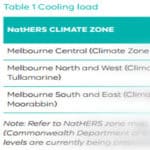

As of March 2017, all new apartments developed in Victoria must meet the newly introduced Better Apartments Design Standards. These policy guidelines will influence the design of apartment development in Melbourne for years to come.
A key objective of the new standards is energy efficiency for all dwellings. New developments must reduce fossil fuel energy use and make appropriate use of daylight and solar energy to ensure that they achieve adequate thermal efficiency.
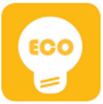 To ensure energy efficiency, developments must not exceed the specified maximum NatHERS annual cooling load. NatHERS is the Nationwide House Energy Rating Scheme which ensures dwellings are comfortable for its residents while also helping save on energy bills through smarter design choices. Windtech can ensure that each dwelling within the development satisfies the specified maximum NatHERS annual cooling load.
To ensure energy efficiency, developments must not exceed the specified maximum NatHERS annual cooling load. NatHERS is the Nationwide House Energy Rating Scheme which ensures dwellings are comfortable for its residents while also helping save on energy bills through smarter design choices. Windtech can ensure that each dwelling within the development satisfies the specified maximum NatHERS annual cooling load.
Windtech Consultants has extensive experience in undertaking energy efficiency studies through the use of industry standard NatHERS software (BERS Pro). Windtech has researched the comparative costs of different paths for compliance and is therefore well equipped to assist both developers and designers to determine the most cost effective solutions to satisfy the energy efficiency component of the Better Apartments Design Standards.
BASIX Certificates in New South Wales
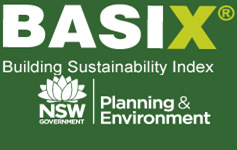 Windtech has many years’ of experience determining the energy efficiency of residential buildings and has assisted numerous developers and designers to achieve compliance with BASIX assessment standards in New South Wales.
Windtech has many years’ of experience determining the energy efficiency of residential buildings and has assisted numerous developers and designers to achieve compliance with BASIX assessment standards in New South Wales.
The Building Sustainability Index (Basix) aims to deliver equitable and effective water and greenhouse gas reduction through efficient design of the development. Thermal modelling of the residential components of the development are made to determine the amount of energy that each dwelling requires to maintain thermal comfort throughout the year. If it is established that a dwelling does not meet the thermal performance criteria, various forms of treatments will be added to the thermal model in consultation with the client and/or architect. Windtech staff are highly skilled in understanding the comparative costs of alternative paths to achieve compliance and does not charge extra for this additional modelling.
BASIX also helps reduce water and energy consumption therefore providing substantial long term financial savings and sustainability. BASIX certification is mandatory for all residential developments in NSW.
Whether you are in need of meeting the Better Apartments Design Standards in Victoria, or a BASIX assessment in New South Wales, Windtech can provide a prompt, experienced and cost effective service today.
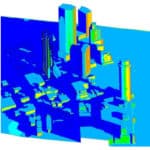
Neighbours of new developments and local government authorities are becoming increasingly aware of the potential impacts of solar reflectivity, whether in terms of visible light or thermal reflectance. To prevent such risks, Windtech Consultants carries out assessments of both visible light and thermal reflectance to predict and mitigate these effects before they happen.
Two of the most well-known projects in terms of solar thermal reflectance impact is the ‘Walkie Talkie’ high rise development in London, UK and the VDARA Hotel, Las Vegas. The concave form of the curtain wall façade of these developments concentrated solar reflections, increasing the intensity of both light and heat. The intensity was so severe in the instance of the ‘walkie talkie’ building that there was damage to nearby vehicles. This included warping of the exterior of these vehicles, as well as melting plastic components. In the case of the VDARA Hotel, there were reports that people received severe sunburns and that the outdoor pool temperature rose by 20 degrees. This effect is similar to pointing a magnifying glass to an object located close to the focal point of the lens.
To prevent such risks, Windtech Consultants carries out thermal reflectance modelling to predict these effects. An example is the detailed analysis into the solar thermal reflectance of the high rise structure proposed for 104-114 Scarborough St, Southport, Queensland. The analysis focused on the impact of solar thermal reflectance from the façade of the proposed development on the surrounding streets below.
Two seasonal cases were studied, namely autumn and summer, which are the most critical for solar thermal reflectance. The thermal conditions were assessed for a 12 hour period in total, ranging from 6:00am up until 6:00pm for the aforementioned seasons.
The analysis involved a hybrid approach, whereby a numerical model was generated using a computational fluid dynamics (CFD) package which was then combined with desktop calculations of occupant comfort parameters; namely the Standard Effective Temperature (SET), Predicted Mean Vote (PMV) as well as the Predicted Percentage Dissatisfied (PPD). These have been shown to more closely reflect a person’s perception of temperature. Additionally, occupant safety was also assessed by means of comparing the findings of the analysis against guidelines set out by the US organisation’s Federal Emergency Management Association (FEMA) as well as the US National Fire Protection Association (NFPA). Furthermore, an assessment was made of the background thermal conditions of the surrounding streetscapes (without the proposed building) to properly gauge the impact of the proposed development.
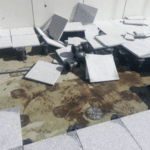
In recent times, the installation of paver pedestal systems for outdoor areas of building developments has increased in popularity. The noted advantages include, water damage prevention (reduced membrane deterioration) and reduced heat conductivity to the area below. Designers have assumed in the past that the net pressures on these pavers would tend to equalise due to surface pressure being transferred to the cavity below. However, this assumption has been proven to not hold particularly when the pavers are subject to significant accelerated flows around the corners of the base of a tower, where it meets with the podium or conical vertices at the corners of roof top terraces. These wind flow structures can generate a significant net uplift pressure sufficient to overcome the self-weight of some of the largest and heaviest loose-laid pavers. This can result in damage to the pavers from localised movement to larger impacts where such pavers can be uplifted and become wind borne.
The loose-laid pavers are lifted when the net pressure between the top and bottom surface of the paver is sufficiently negative to overcome the gravitation load holding the paver in place. As the vortices pass over the middle of a given paver, the pressure propagates to the cavity underneath via the open edges. However, the transfer of the negative (suction) upper surface pressure to the underside of the paver is incomplete, resulting in an underside surface pressure that is significantly less negative and this leads to the paver lifting.
Windtech Consultants have undertaken full-scale paver lift-off studies for various configurations of loose-laid pedestal paving systems to understand the relationship between the net uplift pressure that causes the pavers to lift and the paver density, dimensions and the depth of the cavity below the pavers.
To be able to provide the client with an understanding of the risk, or expected mean recurrence period for paver lift-off, a wind tunnel study of the subject development is undertaken. The various areas proposed to be covered with the loose-laid pavers are instrumented with pressure sensors to determine the wind pressure acting on the top surface (typically a podium or roof terrace area) for 36 wind directions. The measured pressures acting on these areas are then combined with a directional probability wind climate model for the region and the full-scale measurements for the given paver system to derive a return period (risk) for lift-off of the pavers for the proposed system. This enables the client to have a complete understanding of the problematic areas and/or risks associated with the area, and implement mitigation measures for areas that pose unacceptably high risk, should this be required.
Example of a full-sale test of a pedestal paver system.
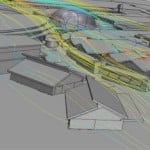
Today, shopping centres are all about “the experience”. When consumers go to shopping centres, they do not just want to purchase items, they want to be entertained, hence designs are radically changing to keep customers engaged. This can be seen with the advent of restaurants, bars, outdoor spaces and other entertainment options. Modern day shopping centres are becoming more like mini-cities than a mere retail outlet. The more the centre has on offer, the longer the consumer is likely to stay and also greater probability that they will return. Because of this, the designs are constantly evolving to suit the ever-changing consumer needs. It is therefore essential that consumer comfort is a high priority during the design phase to ensure the success of the retail performance and consumer experience. It has been seen that centres which do not consider this aspect suffering from a retail turnover decline and consumer complaint rate.

Figure 1: Flow streams generated using CFD showing flow patterns over The Village section of Chermside Shopping Centre
Windtech Consultants have worked on a significant number of high profile shopping centres around the world. Our work has ensured the optimal design of the building in terms of wind, thermal comfort and daylight performance. Windtech’s capability for accurate thermal comfort modelling, particularly in the case of complex buildings, has previously been demonstrated through our work on the award winning Global Change Institute Building in Brisbane, Australia. Windtech’s hybrid modelling technique provides increased accuracy through the use of wind tunnel modelling to establish the boundary conditions for the effect of wind on the internal pressures and wind entry. Windtech have subsequently provided remedial advice for shopping centres which had underperformed in terms of the expected thermal comfort as they had not been analysed using Windtech’s more rigorous approach.

Figure 2: The Chermside Shopping Centre model in the wind tunnel.
Being knowledgeable of the importance of the customer experience, Westfield commissioned Windtech Consultants to study the wind conditions and thermal comfort associated with the outdoor entertaining spaces and internal mall areas associated with the recent upgrade of the Chermside Shopping Centre in Brisbane, Australia. In addition to this, studies were also undertaken to determine the impact of wind-driven rain, wind entry effects, daylight illumination as well as wind loads on the external cladding to optimise the design of the development.

Figure 3: Daylight Illumination Study within the Centre
From the detailed modelling undertaken, Windtech were able to develop solutions to improve the thermal comfort associated with The Village, an outdoor section of Westfield Chermside. A separate study was undertaken to help reduce heat loading on the glazed sections of the facade and pockets of areas exposed to heat build-up. The advanced modelling carried out by Windtech for shopping centres helps to ensure that developers/owners are able to obtain an accurate prediction of thermal comfort as well as keep up with the growing demands of modern-day shopping centres, improving the customer experience and overall performance.

Figure 4: Thermal Comfort Study within and around the Centre